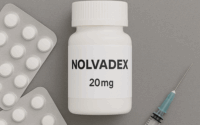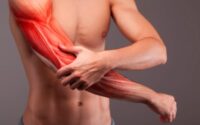Muscle Recovery Tools
 Muscle Recovery Tools
Muscle Recovery Tools
Muscle recovery tools have revolutionized the way athletes, fitness enthusiasts, and even the everyday person approach physical rejuvenation and rehabilitation. The importance of muscle recovery in any physical regimen cannot be overstated, as it directly influences performance, progression, and prevention of injuries. With the advent of innovative technologies and deeper scientific understanding, the market is now replete with a plethora of tools designed to optimize recovery processes. This essay delves into the intricate world of these muscle recovery tools, exploring their physiological impact, addressing the diversity of options available, and considering future implications in health and fitness realms.
1. The Physiological Imperative of Muscle Recovery:
Muscle recovery entails more than merely alleviating soreness. It is about enabling the body to repair itself more efficiently after exertion. During physical activities, muscle fibers experience micro-tears, a natural and necessary phenomenon for muscle growth and strength building. However, the restoration process is where the actual strengthening occurs, necessitating an environment conducive to repair. This phase involves the removal of metabolic byproducts like lactic acid, replenishment of energy reserves, and tissue repair. Facilitating these biological processes through external aids not only enhances recovery but also significantly reduces the risk of injuries.
2. A Spectrum of Muscle Recovery Tools:
The landscape of muscle recovery tools:
**Manual Tools: **
– **Foam Rollers: ** These cylindrical tools are used for self-myofascial release, effectively working out knots and releasing tension in the muscles. By applying body weight against the foam roller, users can target specific muscle groups, promoting increased circulation and flexibility.
– **Massage Balls: ** Similar in principle to foam rollers, massage balls allow for more precise pressure application, making them ideal for reaching smaller muscle groups and trigger points.
**Electronic Tools: **
– **Percussion Massagers: ** Also known as massage guns, these devices use percussive therapy to deeply massage muscle tissue, enhancing blood flow and reducing muscle stiffness. Their popularity stems from their ability to deliver targeted, rapid pulses that penetrate deeper than standard manual techniques.
– **Electric Muscle Stimulators (EMS): ** EMS devices apply electrical currents to muscles, causing them to contract.
**Thermal Tools: **
– **Cryotherapy Units: ** These devices use cold temperatures to reduce inflammation and pain.
– **Heat Therapy Tools: ** Conversely, applying heat helps relax and loosen tissues and increase blood flow, which can be particularly beneficial before stretching or starting physical activities.
3. Customizing Recovery:
Understanding the specific needs of each individual is crucial in selecting the most effective recovery tools. Factors such as the intensity of workouts, prevalent muscle groups engaged, and personal recovery timelines influence what tools may be most beneficial. For instance, someone focusing on endurance training might benefit more from cryotherapy to combat inflammation, whereas a strength athlete might find percussion massagers particularly advantageous for deep tissue recovery.
4. The Future of Muscle Recovery:
The evolution of muscle recovery tools is propelled by technological advancements and a growing body of research emphasizing. Future directions might include integrated systems that combine real-time biometric feedback with adaptive recovery modalities. Advancements in material science could usher in a new era of recovery wearables.
Conclusion:
In the grand scheme of health and physical fitness, the importance of muscle recovery is unequivocal. The development and diversification of muscle recovery tools represent a confluence of tradition and innovation, offering individuals a broad arsenal for tackling post-exercise recuperation. As we move forward, the key to maximizing their potential lies in personalization and integration into broader health and wellness strategies. Embracing the advancements in this field not only aids in achieving peak physical condition but also underscores a commitment to nurturing the body’s intrinsic mechanisms for repair and growth.

